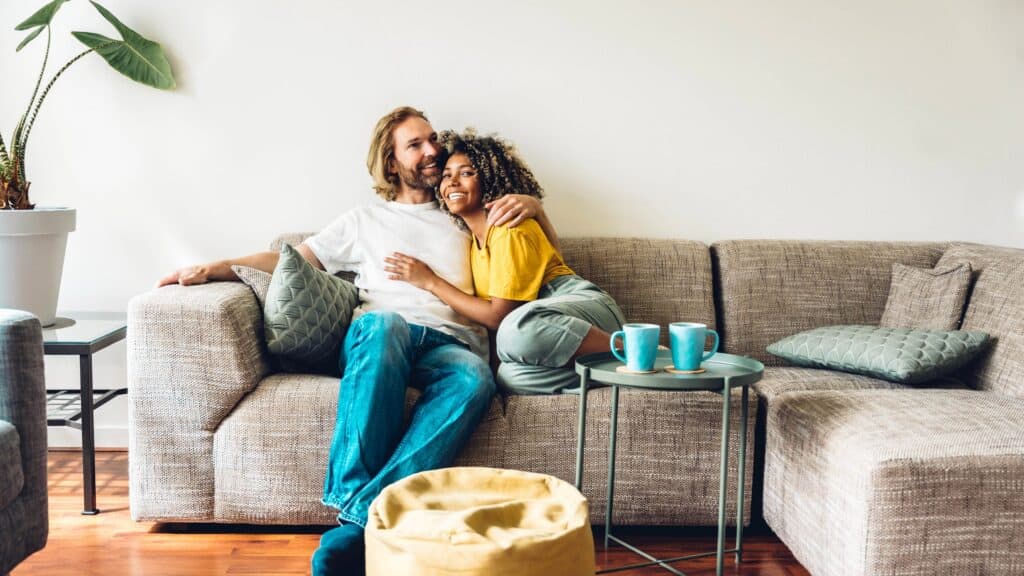Keeping an eye on interest rates when paying off your home loan or mortgage is imperative – in a climate of rising living costs, being aware of changes in your repayments will serve you well.
But what affects interest rates, and why are they being driven up? The interest rates on loans from banks and other lenders are actually driven by the cash rate, which the RBA influences through various mechanisms.
When the cash rate goes up, interest rates go up, which decreases market demand and economic activity; over time, this drives prices down and reduces inflation. In a nutshell, the RBA is driving up interest rates to bring down the cost of living.
During COVID-19, the RBA promoted record-low interest rates to ward off a recession. But those rates were never going to stick around, and, now, as inflation rises, interest rates are following suit. People became conditioned over the last two years to think that low rates are standard; the reality is that, when I started my banking career in the late 1990s, the norm was between five and six percent. We’re really just returning to baseline.
How to Shop Around for New Interest Rates
It can seem unfair, but banks will offer attention-grabbing lower rates to attract new customers while making money from their existing customers. Being aware of the situation and proactively reviewing what’s available to you every six months will put you on track to not only save money but potentially pay off your mortgage sooner.
You can’t sit by and not review what’s happening in the market – everyone is reassessing right now. There are serious and tangible options out there, and you could be capitalising on them.
What Is Refinancing?
Refinancing is paying off an existing loan with a new loan that has different terms and conditions, often with a different lender to the original loan. You can do it to take advantage of lower interest rates, improve your cash flow, or access other benefits like increased flexibility or fewer fees.
Common Refinancing Misconceptions
The biggest refinancing misconception I hear is the assumption that moving lenders is counterproductive because of the effort and high costs. Before July 2011, this was generally correct. There were deferred establishment fees – commonly known as exit fees – attached to leaving a mortgage early. Some exit fees were substantial, but, luckily, they were abolished during the Gillard government, making movement between banks fair and viable.
Today, refinancing your home loan is much simpler and less expensive. Often, my clients are genuinely surprised by how straightforward everything is – especially with an experienced broker handling most of the work.
Benefits of Refinancing
In addition to direct savings on your repayments, refinancing also allows you to restructure your mortgage. A carefully structured loan allows you to maximise your interest savings and shorten repayment length. There are a staggering 26 different parts or attributes that shape the structure of a mortgage, which means 26 decisions that directly affect the cost of your mortgage and the security it provides you, not to mention how much time and hassle it takes to manage your borrowing. These parts include your credit rate, the size of the loan, any co-borrowers and their own history, the length of the term, the type of the property, its value and more.
There are more money-saving methods you can investigate when you’re at this stage. If you talk to your broker, they’ll probably discuss some of the following aspects and features associated with refinanced loans.
Offset Accounts
An offset account can be a smart way to save money on your mortgage over time. It’s a bank account that’s linked to your mortgage, and the money in it is used to offset the amount you owe on your mortgage – you only end up paying interest on the remaining mortgage amount. This means that the more money you have in your offset account, the less interest you’ll pay.
Offset accounts are useful because they’re normally treated like a standard transaction account, which means they can be used to make extra mortgage repayments. You do have to remember that not all mortgages offer offset accounts and that there can be fees or restrictions.
Loan Policies
Loan policies are the sets of rules that lenders use to decide on acceptable transactions within their risk appetite. These policies consider various factors such as eligible income, acceptable security, the purpose of the loan, the loan’s term, debt to income ratio and more. The goal of a loan policy is to assess the risk involved and to ensure that you, the borrower, can repay the loan.
Debt Consolidation
Debt consolidation helps simplify your finances by combining multiple debts into one, more manageable payment. It can reduce your monthly payments and potentially lower your overall interest rate, but it’s important to talk through a potential consolidation with a qualified financial professional.
Compound Effect of Refinancing
When you have the chance to reduce your interest rate by a single percent, it doesn’t seem like much. People won’t bother changing institutions despite how easy it can be, but let’s say you have a $500,000 home loan with a current interest rate of 4.5% over 25 years.
That’s a monthly principal and interest repayment of around $2,779. If you switch to a new lender offering an interest rate of 3.5%, your monthly principal and interest repayment drops to $2,503. This reduces your actual repayment by $276 per month – or interest savings of $82,000 over the entire life of the loan (assuming 25 years). Those figures are just an example, but, for the majority of Australians, they represent the kind of savings you can’t ignore.
Conclusion
“Nothing worth having comes easy,” said Theodore Roosevelt. I have to agree. Consistently monitoring interest rates can be tiresome, and deciding to refinance isn’t easy either, but sticking your head in the sand can leave you with losses down the line. That’s why I recommend you talk to a financial professional regularly, especially when you see the markets start to move. They can help you navigate the process and find the best terms, making the process as painless as possible.






